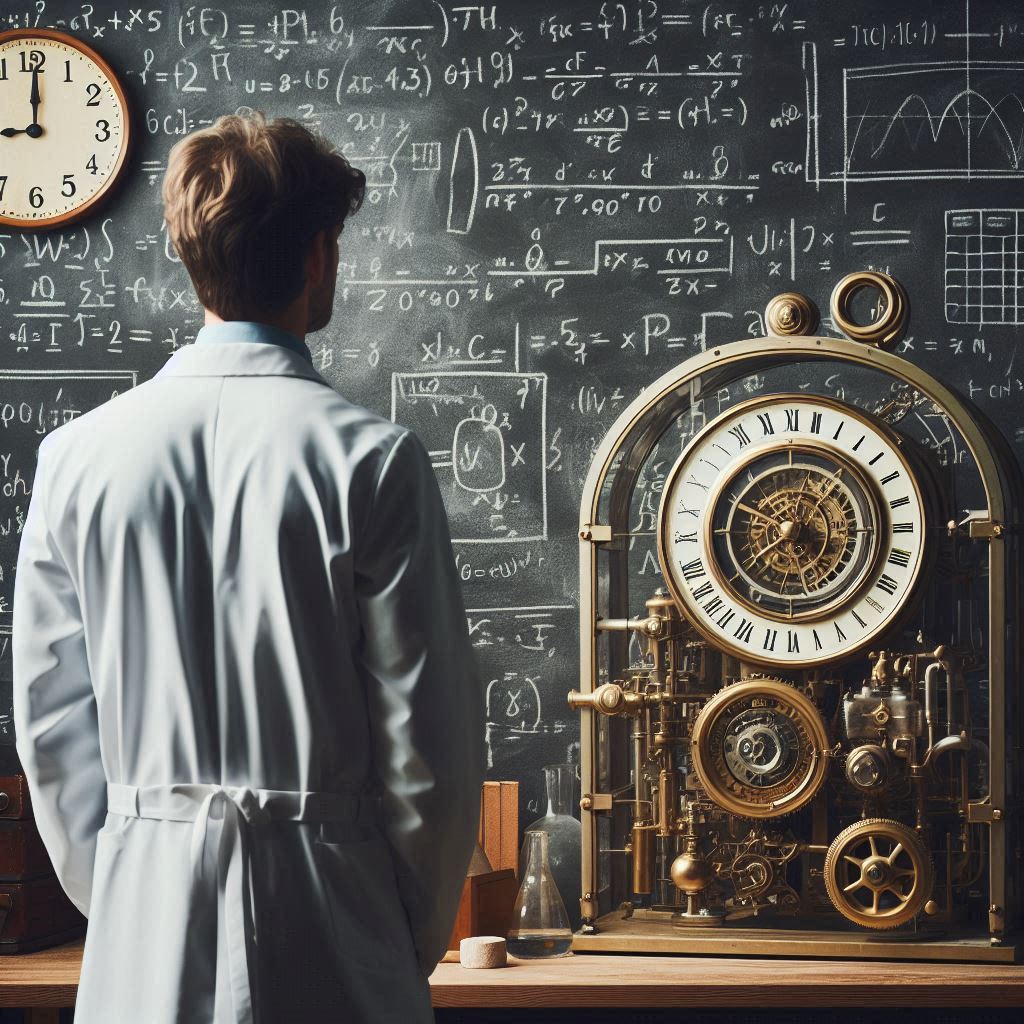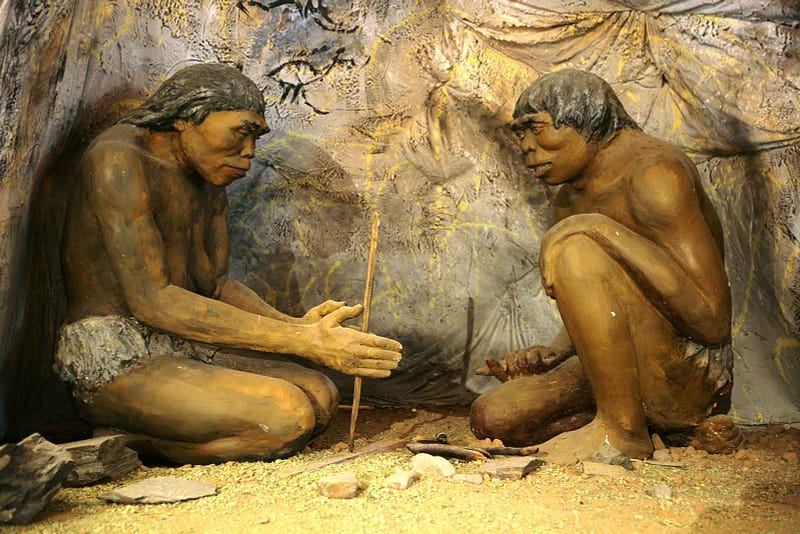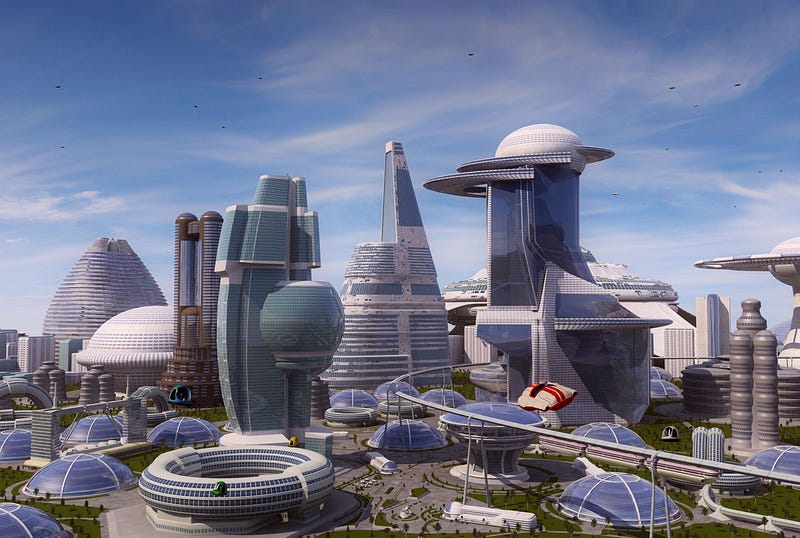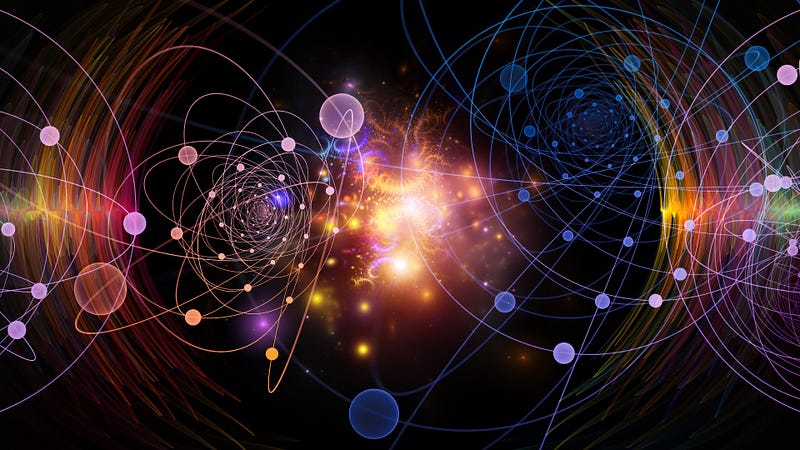If you’re a fan of science fiction like I am, then it’s likely that the idea of time travel has captured your imagination. The concept of being able to travel through time, either forwards or backwards, is a fascinating one that has been explored in countless books, movies, and TV shows. It raises a multitude of intriguing questions — can we truly travel back in time and witness historical events firsthand? Can we venture into the future and catch a glimpse of what’s to come? The possibilities are endless, and the mere thought of such a capability is enough to spark the imagination and stir up a sense of wonder and excitement.
The concept of time is both fascinating and perplexing. On the surface, it seems like a straightforward idea — the measurement of the duration between events or moments. However, when we delve deeper into the nature of time, we begin to realize just how complex and enigmatic it truly is.
Let’s take a closer look at this enigmatic force called “time.”

Physicists define time as “the progression of events from the past to the present into the future.” Time is the fourth dimension of reality, along with the three-dimensional space.
Oh, and time is relative! In other words, each of us has a unique personal clock that ticks at a distinct pace from everyone else’s. Depending on our frame of reference, time moves at a different pace. It is possible that a second in one reference frame is longer than a second in another.
Heard the term Time dilation? It describes the slowing down of time as measured by observers that are either moving relative to each other or are at different positions in a gravitational field.
And lastly, there is the “arrow of time” or the asymmetry of time which describes the irreversible flow of time in only one direction — forwards.
Now that we have a “rough” idea of what time is, let’s get back to the real subject at hand: time travel.
So, what is time travel?
The idea of moving forward or backward to different points in time is known as time travel, much like you moving between different points in space.
David Lewis, an American philosopher, and the writer of “The paradoxes of time travel” defined it as, “an object time travels if and only if the difference between its departure and arrival times as measured in the surrounding world does not equal the duration of the journey undergone by the object”.
Also, after travelling through time, a person’s mind and body should remain unchanged, with their memories intact.
Now before moving further into the possibility of time travel, we must have some basic idea about Einstein’s theory of relativity. At a very high level, this theory states that,
time and motion are relative to each other,
the speed of light in vacuum is constant and nothing can travel faster than that speed.
These two principles may seem simple at first glance, but their implications are far-reaching and have revolutionized our understanding of the universe. By providing a new framework for thinking about space and time, Einstein’s theory of relativity has opened a world of possibilities, including the tantalizing idea of time travel.
Combining these two principles, we get, the faster we travel through space, the slower we move through time. So, a person travelling at speeds closer to the speed of light will experience time much, much slower than an observer at rest.
Why Time Travel Is Possible:
While the concept of time travel may seem like a far-off fantasy, some physicists and scientists believe that it could be possible.
For starters, time travel is consistent with current physical theory such as Einstein’s general theory of relativity! In fact, general relativity does open the potential of travelling through time, i.e., moving backwards and/or forwards in time, like how we move between different points in space. Also, time can be warped and distorted by factors such as gravity and motion. Scientists have already observed this phenomenon in action — for example, astronauts on the International Space Station experience time passing more slowly than people on Earth because of their speed and altitude.
Einstein also said our universe has a speed limit: nothing can travel faster than the speed of light (186,000 miles per second). What does this mean for time travel? Well, according to this theory, the faster you travel, the slower you experience time.
NASA’s space telescopes also give us a way to look back in time. So, when we look into the sky with a telescope, we are seeing what those stars and galaxies looked like a very long time ago.
But what about more extreme forms of time travel, such as going back in time to meet historical figures or forward in time to explore the future? While this remains firmly in the realm of science fiction for now, some scientists have proposed theoretical models that suggest that it could be possible to manipulate space and time in such a way as to create a “wormhole” — a sort of shortcut through the fabric of space-time that could allow for travel to different points in time.
Why Time Travel Is Not Possible:
The simplest answer is that time travel cannot be possible because if it was, we would already be doing it. Others suggest that it may be forbidden by the laws of physics, like the second law of thermodynamics or relativity. Still others point to technical challenges, such as the vast amounts of energy required.
Mathematician Kurt Gödel famously invented a universe in which time travel was possible, but it came at a cost: the past and future became inextricably tangled, making causality impossible to discern.
There are also proposals for time machines that require matter with negative energy or negative mass, called “exotic matter”, which do not exist in our universe. From quantum mechanics, we know that such matter can theoretically be created, but in too small quantities and for too short times. And even without negative mass, mathematical physicist Frank Tipler proposed a time machine that would require more energy than exists in the universe.
One of the biggest challenges to time travel, however, may be the second law of thermodynamics, which states that entropy, or randomness, must always increase. By travelling into the past, we would be going from now, a high entropy state, into the past, which must have had lower entropy. This violation of the second law of thermodynamics could make time travel impossible.
However, this does not necessarily preclude time travel into the future. Theoretical physicist Stephen Hawking suggested a “chronology protection conjecture,” which states that the laws of physics may prevent us from travelling into the past but allow us to travel into the future.
While the possibility of time travel remains a subject of debate and speculation, there are numerous obstacles and challenges that must be overcome. Whether or not we will ever be able to travel through time remains one of the great mysteries of the universe.
Time Travel Paradoxes:
Other challenges include the presence of paradoxes that arise from the possibility of travelling through time. These paradoxes can be both intriguing and mind-boggling and have puzzled scientists and science-fiction writers alike for decades. Some of the most famous paradoxes associated with time travel include:
The grandfather paradox: The Grandfather Paradox is perhaps the most well-known time travel paradox. It goes like this: You travel back in time and kill your grandfather before he has children. If your grandfather never has children, then your parents are never born, which means you were never born. But if you were never born, then you couldn’t have traveled back in time to kill your grandfather in the first place. This creates a paradox that seems impossible to resolve.
Another paradox is the bootstrap paradox, which involves the question of where a particular item or piece of information came from if it was brought back from the future. For example, if you travelled back in time and gave Aryabhata the idea to discover the concept of zero, did he discover it? or did he simply bring it back from the future after learning about it from you?
A Predestination Paradox refers to a phenomenon in which a person traveling back in time becomes part of past events and may even have caused the initial event that caused that person to travel back in time in the first place. This paradox suggests that time may be fixed and unchangeable.
Solutions To These Paradoxes:
Fortunately, scientists and authors of science fiction have put up several plausible answers to these paradoxes.

The concept of numerous timelines or parallel universes is one approach to solving the grandfather paradox. In this scenario, if a time traveler kills their grandfather in the past, they do not actually vanish from existence. Instead, they create a different timeline or world in which their grandfather is no longer alive, but they remain present in the first. Although it is still up for debate among physicists, the concept of parallel universes or timelines is frequently employed in science fiction and does offer a solution to the grandfather paradox.
Solution to paradoxes like the bootstrap paradox involves the concept of predestination. Predestination is a key component of the solution to dilemmas like the bootstrap conundrum. The time traveler’s activities in this case were always intended to take place and were already a part of the chronology. According to this theory, it is impossible to influence the past, and travelling through time is more like a journey rather than an opportunity to alter the course of history.
Lastly, some physicists have proposed the idea of the Novikov self-consistency principle. This principle suggests that any action taken by a time traveler in the past is already predestined to happen in a way that preserves the consistency of the timeline. In essence, this indicates that the time traveler’s activities in the past are predetermined to take place in a way that maintains the timeline’s coherence.
While there may not be a definitive solution to every paradox, the proposed solutions provide an interesting way to explore the possibilities of time travel and the consequences that come with it.
Time Travel To The Past:

The idea of time travel into the past includes going backwards through time to a previously happened event. One of the primary difficulties with time travel to the past is the violation of causality, which means an effect happens before its cause. The physical principles, including the definition of time itself, would need to be revised to achieve this. There are also several paradoxes, which are already discussed above, that needs to be considered when discussing time travel to the past.
However, in 1948, Kurt Gdel of the Institute for Advanced Study in Princeton, N.J. proposed a solution to Einstein’s gravitational field equations that described a rotating universe. In this universe, an astronaut could travel through space to reach their own past, thanks to the way gravity affects light. The rotation of the universe would drag light (and thus the causal relations between objects) around with it, enabling a material object to travel in a closed loop in space that is also a closed loop in time, without at any stage exceeding the speed of light in the immediate neighborhood of the particle.
It’s not just time travel that brings us into the past — even the act of looking through a telescope is a way of seeing the past. When we observe stars and galaxies through telescopes, we’re actually seeing what those objects looked like a long time ago, as the light from them takes a long time to reach us. Carl Sagan once famously remarked that even when we look at a friend who’s just a few meters away, we’re seeing them as they were a fraction of a second ago.
Despite the challenges and paradoxes, many scientists believe that time travel to the past could be achieved through an Einstein-Rosen bridge, a type of wormhole proposed by Einstein himself. While we may not be able to hop into a time machine just yet, it’s exciting to think about the possibilities that could arise from such a groundbreaking discovery.
Time Travel To The Future:

While it may seem like science fiction, time travel to the future is actually a real possibility. The key lies in understanding the principles of relativity and time dilation.
Moving forward in time is a relatively simple process compared to travelling to the past. All you have to do is speed up to as close to the speed of light as possible. This causes time to move slower for you than for the world around you, resulting in time dilation. Essentially, if you travel close enough to the speed of light, you will age slower than the world around you, effectively propelling you into the future.
This phenomenon has already been proven with the help of time dilation, which occurs all the time in our daily lives. GPS satellites, for example, have highly precise clocks onboard that gain an average of 38 microseconds per day due to time dilation. While this may seem like a small amount, it’s proof that time dilation is a very real phenomenon.
But what about travelling decades or even centuries into the future? While it’s theoretically possible, it would require much more extreme conditions than just speeding up to near-light speeds. For example, we could take advantage of the intense gravitational acceleration caused by black holes to create a wormhole that would allow time travel. Alternatively, we could send a traveler rocketing into space at close to the speed of light, a feat that would require technology far beyond what we have currently.
So, while travelling a few microseconds into the future is something that humans can currently manage, we’re still a long way from travelling decades or centuries ahead. However, the possibility is still there, and who knows what breakthroughs in science and technology may bring in the future.

Quantum mechanics is a field of physics that studies the behavior of subatomic particles. The concept of superposition is a fundamental tenet of quantum physics, which stipulates that a particle can exist in several states at the same time until they are observed or measured. In theory, manipulating particle superposition may allow you to travel back in time.
“A team of physicists from the Universities of Bristol, Vienna, the Balearic Islands, and the Institute for Quantum Optics and Quantum Information has demonstrated how quantum systems can simultaneously evolve along two opposite time arrows — both forward and backward in time,” according to a recent press release.
This extraordinary ability is governed by the quantum principle of superposition, which stipulates that a single particle of matter can exist in two states at the same moment. According to the latest study’s authors, this unusual condition of matter also allows for time travel in both directions, forward and backward.
Another idea of quantum retro causality states that when an experimenter selects the measurement setup with which to test a particle, that decision might alter the attributes of that particle (or another particle) in the past, even before the experimenter made their selection. In other words, a decision made in the present can have an impact on something that happened in the past. It basically claims that a second particle can influence a particle’s passage through time. By measuring the second particle in a specific way, the first particle could be forced to travel back in time to a previous state.
The Quantum mechanics concept of Entanglement, which occurs when two particles become connected in such a way that the state of one particle is instantly affected by the state of the other, regardless of the distance between them, could potentially be used to send information back in time.
However, the concept of time travel in quantum mechanics is not without its challenges and remains a topic of debate among physicists. For example, the uncertainty principle in quantum mechanics suggests that the more we try to measure the position of a particle, the less certain we become of its velocity, and vice versa. This could make it difficult to accurately predict the consequences of time travel and the potential changes it could cause to the timeline.
How To Make Time Travel Possible?
Go Really Fast! : If you want to time travel to the far future in the simplest and most practical way possible, all you need to do is go really, really fast! This is based on Einstein’s theory of special relativity, which says that as you approach the speed of light, time will actually slow down for you compared to those who are not traveling at that speed. So, in a sense, you’ll be time traveling into the future just by speeding up!
Use Gravity : According to his theory of general relativity, the stronger the gravity you feel, the slower time moves. Therefore, If you want to journey into the distant future, you just need to find a place with incredibly powerful gravity, like a black hole.

Wormholes : Wormholes are basically hypothetical shortcuts through spacetime, and some scientists have proposed that wormholes could allow for travel to different points in time using the effects of time dilation. To make a wormhole traversable, exotic matter is required. Exotic matter is something that can generate antigravity which can counteract the enormous weight of a massive system that tends to collapse into a black hole. This antigravity can be created by generating negative energy or pressure. Although the laws of physics do not rule out the possibility of exotic matter, it is still uncertain whether enough antigravitation material can be accumulated to stabilize a wormhole. However, it is known that negative-energy states exist in some quantum systems. If we could create a stable wormhole, it could potentially be transformed into a time machine.
Conclusion:
In conclusion, time travel is still a fascinating and alluring idea that has captivated people for a very long time. True time travel is still a mystery to us, despite recent theoretical and physical advancements that have made it possible to examine the concept. There are hints of the promise in the areas of wormholes, spacetime manipulation, quantum mechanics, and advances in fundamental physics, but there are still many difficulties and riddles to be solved. We must recognize that, if time travel is ever made possible, it will involve technological developments that go beyond what we currently know as we pursue the truth. In the interim, our curiosity in the mysteries of time feeds our creativity and broadens our understanding of the world. But as of now, the question of whether “Time Travel Is Possible?” remains unanswered.



